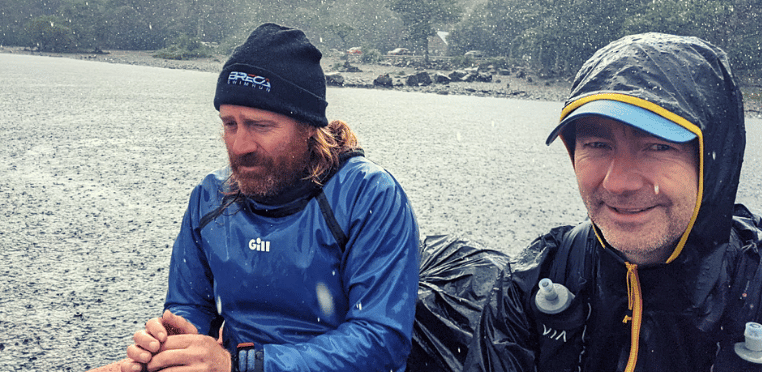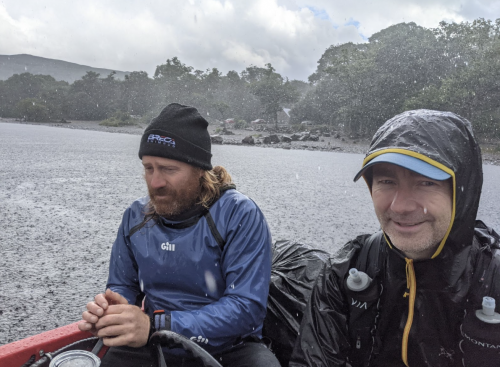Top 5 Common Mistakes Organizers Make On Race Day

Race day is an incredibly exciting moment for the race organiser. A coffee fuelled and bleary eyed start, often in the early hours of the morning and then it’s straight into the action to get things going for what will be a long day ahead.
Events are a successful culmination of many components: operational planning, marketing and event delivery. All combined together to deliver an incredible and safe race day experience for your participants.
The crescendo of activity builds and builds, until that the start hooter is sounded and the participants are off, followed by an unusual moment of calm. But not for long, as there are always jobs to do and an active race to manage.
The last participant has crossed the line, and you breathe a small sigh of relief that all athletes are home safe. Yet those who have been in the ‘game awhile, know that this is only half the job done. As you become increasingly tired, there is equipment to organise, results to process and people to thank.
As someone who has organised swimrun races, adventure races and trail races – I’ve made bucket loads of mistakes on race day. Here are some practical tips I’ve learnt from my own errors and other events; the top 5 common mistakes organisers make on race day. Spoiler alert, it’s all about the car park and toilets!
1) Underestimating how quickly things move
The clock is always against you on race day. And inexorably seems to tick faster and faster the closer you get to the start of the race, the final hour will literally fly by.
Doing as much as you can ahead of the actual race day is key. Here are a few practical areas you can sort ahead of race day: course marking, venue set-up and equipment testing. Let’s dive into these areas:
Course marking should always be done in advance of race day and at least the day before to give you time to react to unforeseen issues with the course.
Example: When organising an adventure race in the Scottish highlands, I had checked the route in the winter. Come summer, I was out marking the course the day before the race and to my horror found impassable ferns higher than a person blocking a full 1.5km section. The landscape had completely changed and a key linking part of the course was now impassable. The landowner was contacted and had time to clear a path through the ferns with a tractor. Which would have not been possible had the course been marked on the same day the race happened.

Setting up your main venues such as the start/finish line area and the registration areas the day before, will give you more time on race day or if nothing else a bit more sleep in the morning!
A note for a first-time organiser or at a new race venue. Double the amount of time you have budgeted for each task. For example, if you have to set up your registration venue and think it will take one hour. Allow for two hours.
Last but not least, test your technology and equipment thoroughly. Recording of results sounds like a simple task, but in practice is only as good as the timing system you or the event team are managing. Which comes from familiarity, in this example giving timekeepers plenty of time to ‘have a go’ in the weeks leading up to the race avoids any race day faux pas.
2) Nail the car parking
Car parking requires military precision and is often neglected as almost an after-thought for many races. In the planning stages, close consultation with the venue is imperative along with contingency plans for wet weather and factors which might impact the ability for participants to access or park without any drama.
Example: I have witnessed first-hand the failure of car parking at a cross country championship resulting in catastrophic consequences for the organisers. A tailback of cars over a mile long, blocked a key emergency services road. The police were then called, and the landowner revoked the event permission with participants onsite. All races cancelled which was terrible for the race organisers, participants and venue – and completely avoidable had attention been paid to a a basic parking management plan.

There are a few tricks to getting the car parking right:
A designated car parking manager with 3-4 helpers who know what they are doing can park thousands of cars quickly. That, with a constant flow of traffic is essential. And under no circumstances let participants wind down a window to speak to the marshall. Cars must be kept moving until they are all parked.
Why does car parking really matter? It is the first experience athletes will have of your race. And since first impressions are important, efficient and organised car parking will set the right tone for the race ahead.
3) Toilet shortages
Such a simple mistake, which is easy to make time and again. Having fewer toilets keeps event costs down and feels like a no brainer to have the absolute minimum number of toilets required for the race. Wrong, wrong and wrong again!
Participants will all want to use the toilets at the same time for a final pre-race clearance of their system. The demand for toilets will peak in the 30 minutes leading up to the race and a common sight at many events are long queues of people.
Again, think back to the athlete experience here. Access to toilets when you have the time pressure of a race start and ‘needing to go’ will create a line of agitated athletes. It’s worth spending a bit more money on more toilets and having more relaxed and happier participants. A gents urinal also helps to relieve the pressure on toilets.
To get more tips om how to set up your arena, check this article.
4) Being distracted by suppliers, customers, the general public and pretty much anyone
As the organiser, at some point during the build up or indeed race, you are likely to be everyone’s point of contact. This presents a unique problem of distracting you from your main task, which is ensuring the safe running of the event.
Race Director, Shane Ohly has famously said to participants ‘I am not your friend’. This is not because Shane isn’t a friendly and well meaning guy, but the fact that he must prioritise event safety above all else. And with the best intentions, a five minute chat with a participant distracts from five minutes spent elsewhere. Members of the general public and spectators are generally an inconvenience to event management. Complaints inevitably feed their way back to the top and when you should be making sure all marshals are in place, instead you are dealing with an angry dog walker.
To resolve this, it helps having two key contacts in the event management team, one who leads safety and the other who takes on a front of house role. The ÖTILLÖ Swimrun Founders, Michael and Mats are a great example of this. Mats manages safety and Michael manages the front of house. It really works well.
A good Race Director will empower a team of people to help complete race day operations. This is best done as an event management team of 4-5 people with each person in the management team knowing what their individual responsibilities are and when they should escalate. More on some of the key roles in an event management team here.
5) Failing to smile
Can’t you see I’m really serious and stressed?
The best event management team is a relaxed one. Stress is contagious, and will filter down to all areas of an event. Being a relaxed, calm and cheery authority will absolutely bring the best out of the event management team which in turn filters down into the race culture as a whole.
Remember to smile through your own apparent nerves and stress points. So important to do and also so easy to forget in the cut and thrust of a race day.
In very rare instances, you will also need to use command languages to ensure safety. Command language is a simple and urgent instruction to do something. ‘Get this done now’ has much more potency in a relaxed and cheerful culture than if the whole culture is authoritarian with the Race Director barking commands.
So brush your teeth, and get your grin on.

Proper Planning and Preparation Prevents Piss Poor Performance!
The 7 P’s are a famous phrase from British Military planning and can be applied to organising races and events.
In summary, planning and preparation are everything. The more you can do before race day, the more time you have to react to unforeseen circumstances and create a relaxed culture for your event team. Lack of preparation, does the opposite.
So do as much as you possibly can in the days leading up to the race whether that be course marking, venue set-up or testing your equipment.
Think about those unglamorous components to race day which are probably the first two touch-points athletes have before even coming into registration. Which is getting the car parking right and having enough toilets, both go a long way to having relaxed athletes.
Finally, exude a cheery and confident manner which will set the right tone for the race.
In case you need more help making sure you have everything done and planned for your race, consult the Ultimate Organizer Checklist!


